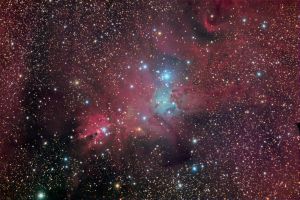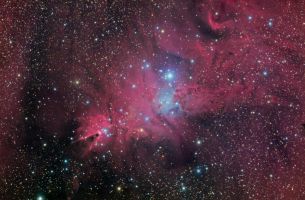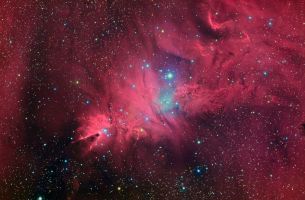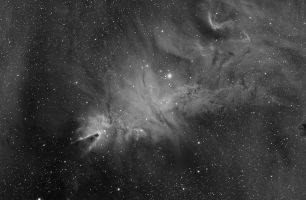The Cone Nebula Region |
||||
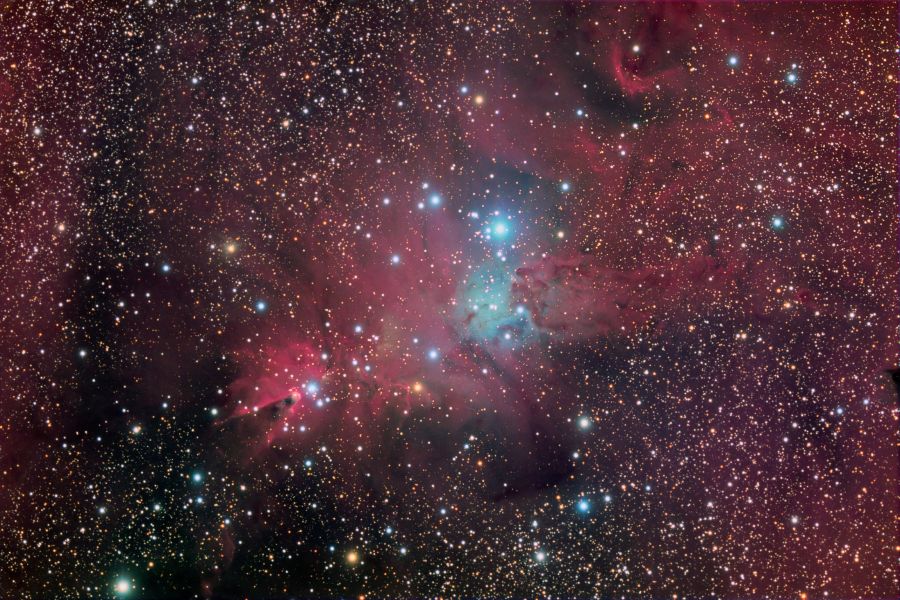 |
||||
|
||||
| Millions of years ago, a fox spied a unicorn
eating an ice cream cone. He wanted the cone for himself and
tried to steal it from the unicorn. A chase between the fox and
the unicorn ensued. Unfortunately for
the fox, the unicorn called to a hunter for help. The hunter obliged and killed the poor fox.
In gratitude, the unicorn gave his ice cream cone to the hunter. The
hunter hung the fox's fur as a trophy on his Christmas tree,
next to the unicorn's ice cream cone. OK, that was my weak attempt at weaving a story around this group of targets. This group of nebulae lies in the constellation Monoceros (the Unicorn), which prances west of Orion (the hunter). The Christmas Tree Cluster is the nickname given to the group of bright blue stars at the center of the image. Though the triangular patch of red nebulosity can (in my eyes) also be seen as a Christmas tree (tipped over in this composition!). The FoxFur Nebula is the aptly-named emission/dark nebula near the blue reflection nebula in the center. And of course, the most appropriately-named Cone Nebula (which I remember haunting images of from books in my youth) is the dark nebula towards the lower right. See how I tried to weave all the constellations and objects in the area together in the story? The bright stars forming the "Christmas Tree Cluster" are actually part of open cluster NGC 2264 (the designation applies to the Cone Nebula as well). As is the case with most open clusters, this is a young group of about 600 stars about 1-4 million years old (mere infants in the life span of stars). The complex nebula cloud around the stars might be the nebula that gave rise to the stars in this cluster (a quick search of the web did not turn up anything definitive on whether this is the case with this grouping or not). But the nature of the nebulae is certain: the red emission nebulae are clouds of hydrogen gas ionized by the radiation from the hot young stars in the area. The blue reflection nebulae are reflecting light from the nearby bright stars. And the dark nebulae are cold clouds of dust blocking light from the stars inside or behind them. Regardless of their nature, they form one complex and pretty picture! I shot this target with the standard LRGB filters and the Hydrogen-alpha narrowband filter as well. There are a few techniques for combining this data. I was pretty pleased with all the renditions, so I present them all here: LRGB alone (no narrowband data - the upper left thumbnail); LHaRGB, where all data is blended together (Luminance + Hydrogen-alpha used as luminance, the upper right thumbnail); HaRGB, where I use the pure Hydrogen-alpha data as my luminance (lower left thumbnail); and a monochrome Hydrogen-alpha only rendition (lower right thumbnail). |
||||
| Constellation: Monoceros | ||||
| When Visible: December - April | ||||
| Distance: 2,600 Light-years | ||||
| Date: January 2012 | ||||
| Location: Rancho Hidalgo, Animas, NM | ||||
|
Exposure Details: H-alpha: 10 x 30 Minutes Binned 1x1 L :16 x 10 Minutes Binned 1 x 1 Red: 17 x 10 Minutes Binned 1x1 Green: 17 x 10 Minutes Binned 1x1 Blue: 17 x 10 Minutes Binned 1x1 16 Hours and 10 Minutes Total Exposure Time |
||||
| Equipment Used: Takahashi TOA-130F on an Astro-Physics AP1200GTO mount. SBIG STL-6303E camera with FW8-STL filter wheel and Astrodon LRGB and narrowband filters. Robofocus focuser and Astrodon Takometer rotator. | ||||
| Acquisition Software : MaximDL 5, TheSky6, CCDAutopilot 5, FocusMax, Takometer Controller | ||||
| Processing Software: MaximDL, Photoshop CS, Carboni Actions, IrFanView, AviStack | ||||
| The large images that the thumbnails link to are only 75% of the original sized image. Here are 100% sized crops of the more interesting features, all in various combine/color modes: |
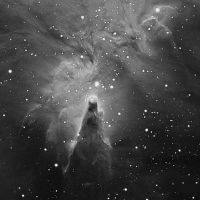
|
Cone H-alpha |
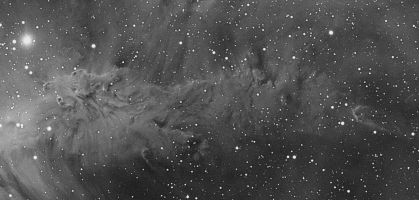
|
FoxFur H-alpha |
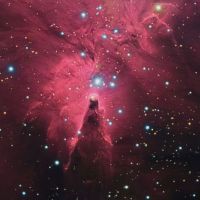
|
Cone HaRGB |
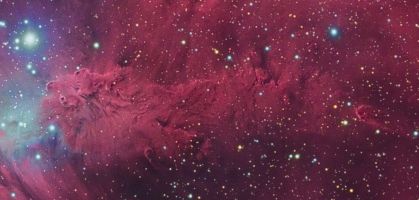
|
FoxFur HaRGB |
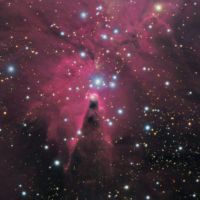
|
Cone LHaRGB |
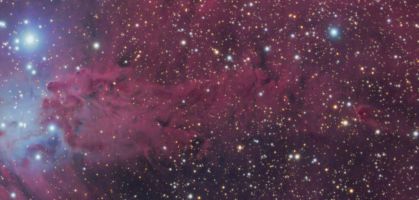
|
FoxFur LHaRGB |

